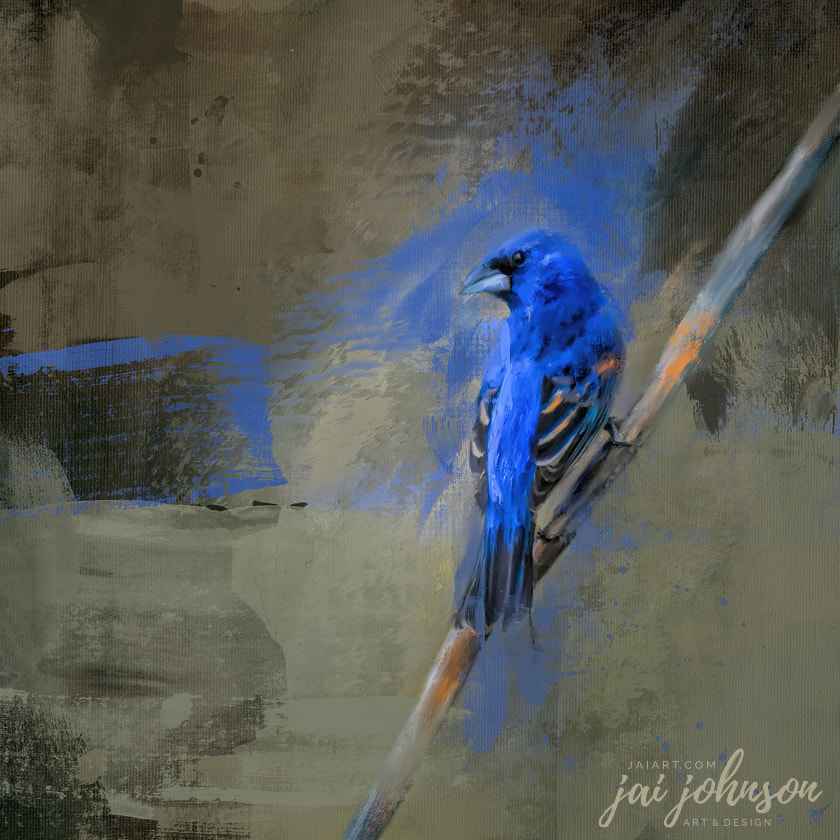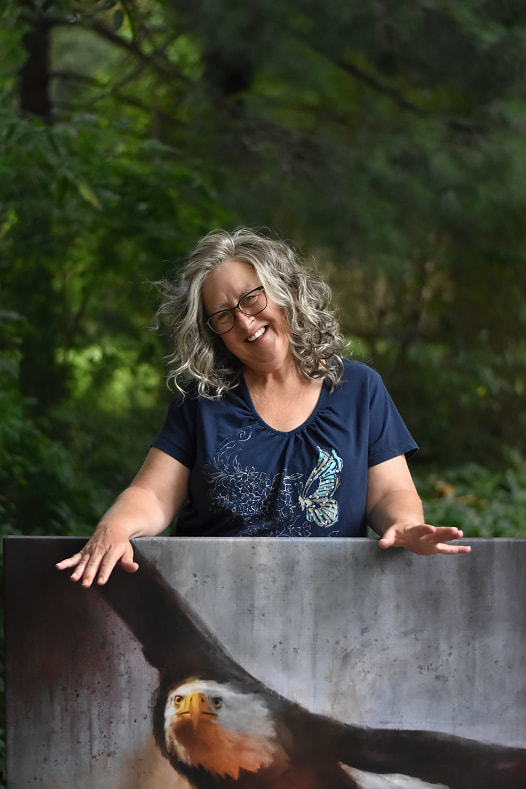The Striking Blue GrosbeakWhen I first saw one of these birds at a glance, I thought it was an Indigo Bunting. Further inspection showed me this bird is larger than a bunting, and in addition to his glorious royal blue coloring, he has some striking chestnut brown markings. This is not the type of bird one just sits and watches fly by, at least not if you're a wildlife photographer like myself. The coloring is so striking, I have followed one around the neighborhood or the forest many times, in an attempt to get that elusive photo. His colors are royal and mesmerizing, and his song is a rich melody he'll sing for 2-3 seconds at a time. In fact, I've often spotted them first by hearing their song, and then scanning the area until I spot one. The females are a rich cinnamon brown color, which compliments the male's coloring beautifully. These are migrating birds, so they're not in my area full time. They love the edges of the forests here, and often hang out around areas with lots of shrubs and vines. I've also spotted them many times near creek areas. They eat a lot of insects, which is why they're abundant inside the tree lines. They also like to eat a variety of grains, and will often be spotted at feeders containing the grains they prefer. They feed their young insects, but only after removing the head, wings and most of the legs. The population of this beautiful bird is widespread across the south, with their numbers increasing slightly every year. I wish we had more of them here, and for a longer time, as they are such lovely creatures with the striking color combination and they are an unobtrusive bird, often sitting at high points in trees, simply singing their lovely song. It's thrilling for me to be scanning a tree line, filled with green, green and more green, and then to discover this brilliantly colored bird sitting in the midst of it, singing. I call it a wonderful surprise from nature. :)
3 Comments
|
Categories
All
Archives |



 RSS Feed
RSS Feed